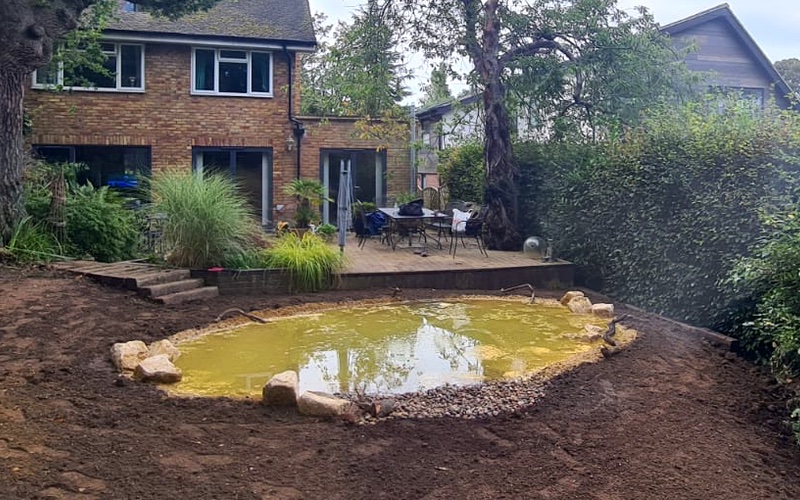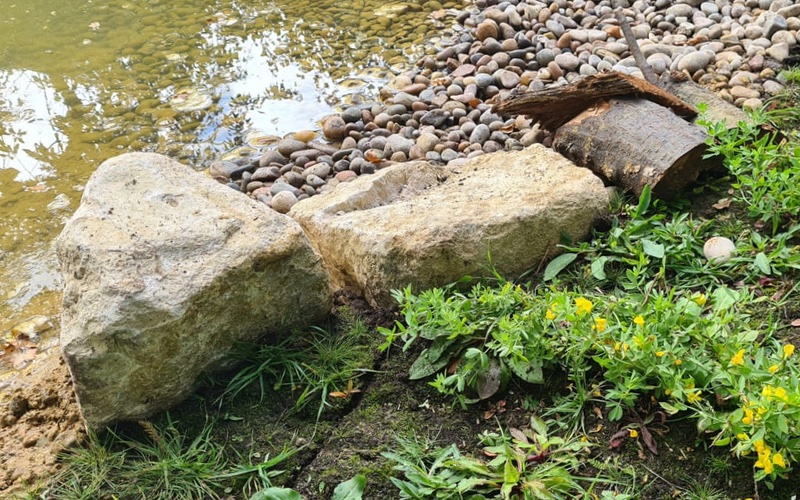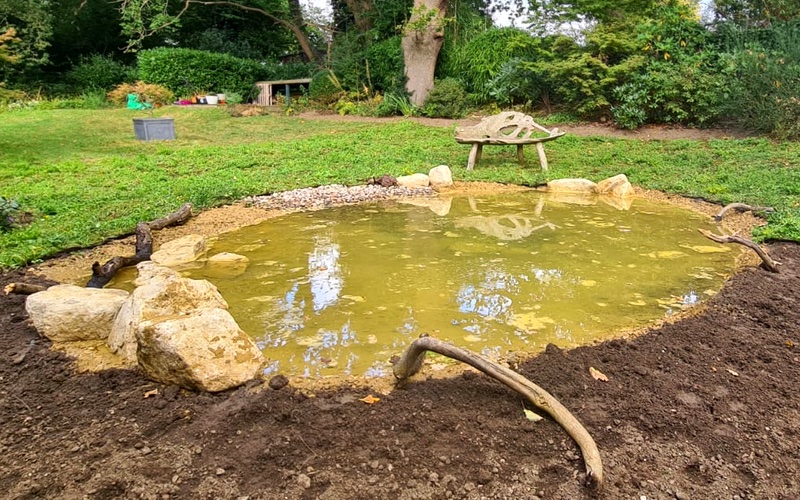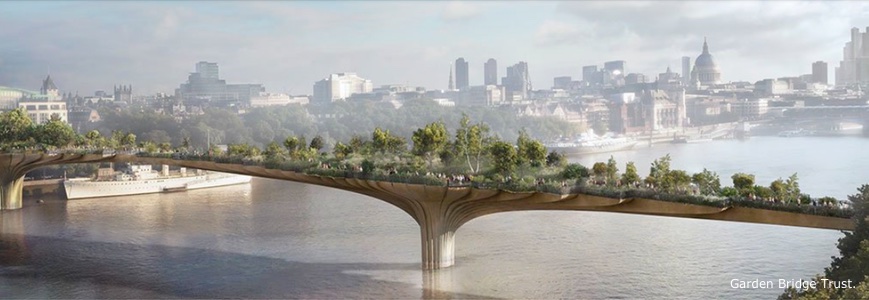THE LANDSCAPING SOLUTIONS BLOG
Welcome to our Blog. Inspiration, updates and industry trends from the team at Landscaping Solutions.
WILDLIFE PONDS
If you’re motivated to make a difference to biodiversity or simply wish to while away the day watching wildlife then you need a pond in your garden.

A professional garden or landscape designer will know where best to place a pond in your garden.
Here’s how to make it happen;
Take time to select an experienced professional to work with. A garden or landscape designer with a passion for creating naturalistic spaces will know how to attract wildlife to the garden and have an instinctive understanding of where best place to place the pond. This might be a natural dip in the lay of the land or an open area away from overhanging trees, preferably in a sunny spot as most insect and plant life thrives in warm, shallow and sunlit conditions. However, we ensure there’s at least two to three feet of depth at some point so hibernating frogs have a place to overwinter. Pond sides should gently slope to the depths to provide trouble-free wildlife access so we always create a shallow ‘beach’ area at one end.

A shallow beach area at one end of the pond provides trouble-free access for wildlife.
A clever designer will plan to save and reuse as much excavated material as possible during the build process. Fertile topsoil can be used to create borders or banks elsewhere in the garden and less fertile sub-soil can be used as growing media in the pond.
Then it’s time to get creative with the planting. Our planting schemes utilise oxygenators such as Hornwort, Water Crowfoot or Spiked Milfoil along with some floating species such as Frogbit, Fringed Water Lilly and Water Soldier. A smattering of emergent species and marginal plants such Amphibious Bistort, Brooklime, Water Avens, Purple Loosestrife, Marsh Marigold, Water Mint and Hard and Soft Rush can be planted directly in to the soil layer in and around the pond.

Boulders and deadwood are great for providing a hiding place for amphibians.
To make the pond more naturalistic we add boulders, stumps, deadwood, bark and branches to provide hiding places for amphibians and perches for birds and dragonflies. Now it’s time to sit back to see what comes in. It won’t be long before beetles, backswimmers, water boatmen and pond-skaters start to arrive. Snails won’t be far behind followed by frogs, toads and newts once the vegetation establishes. Within a year or so you’ll have a fully functioning ecosystem helping to redress the balance of habitat loss in the wider countryside and a constant source of enjoyment and learning.
For more information on how Landscaping Solutions can transform your garden, contact Ben West on 0208 241 2402 or email info@landscapingsolutionsltd.co.uk
BUILDING BRIDGES: THE GARDEN BRIDGE PROJECT

Designed by London based designer Thomas Heatherwick and landscape designer Dan Pearson, the Garden Bridge is a proposed pedestrian bridge with landscaped gardens that will span the River Thames in London from Temple underground station on the North Bank to the South Bank.
Approximately 366 metres long and 30 metres wide (at its widest point) the proposed steel, copper-nickel and concrete bridge will allow pedestrians to weave through an expanse of landscaped gardens as they make their way across the bridge.
As many will be aware, this ambitious project has not been without controversy. Construction costs are currently estimated at £175 million and this is where some of the problems begin.
Although the majority of the project will be funded by private investment (£115 million) around £60 million of the proposed budget will come from public money.
As a result, an overwhelming number of campaigners have voiced concerns that the public contribution to funds is an unnecessary expense. In addition to this many are also concerned that the project as a whole will contribute heavily to an increased level of tourism in an already overcrowded part of London.
Despite heavy opposition, London mayor Sadiq Khan has warned that abandoning the project at this late stage would ultimately cost the taxpayer just as much as to complete it and so reluctantly, has given the project his backing. However, he did make it clear that no further public money would go towards the project and has now put a stop to existing spending, pending a review.
On the other side of the debate, supporters of the bridge see it as a unique opportunity to place nature at the heart of the city, bringing a world-class landscaped garden, with an abundance of plants, trees and shrubs, to the centre of London.
With publicly accessible parks and recreational grounds making up 40% of London’s city space, it can not be denied that these type of green areas within large cities benefit the communities as a whole. A perfect example of this kind of project done well is the High Line in New York city. Since opening in 2009 the High Line has proved to be a financial success and has quickly become an iconic New York destination.
One of the High Line’s strengths however was the repurposing of an existing city structure, a strength the Garden Bridge project does not share. Ultimately the cost and impact of constructing an entirely new structure has attracted the most criticism.
For now we will all have to wait and see what the future holds for the Garden Bridge project, but as London fast falls out of love with the idea, we may not have to wait long.
Full details of the Garden Bridge project are available via their website.